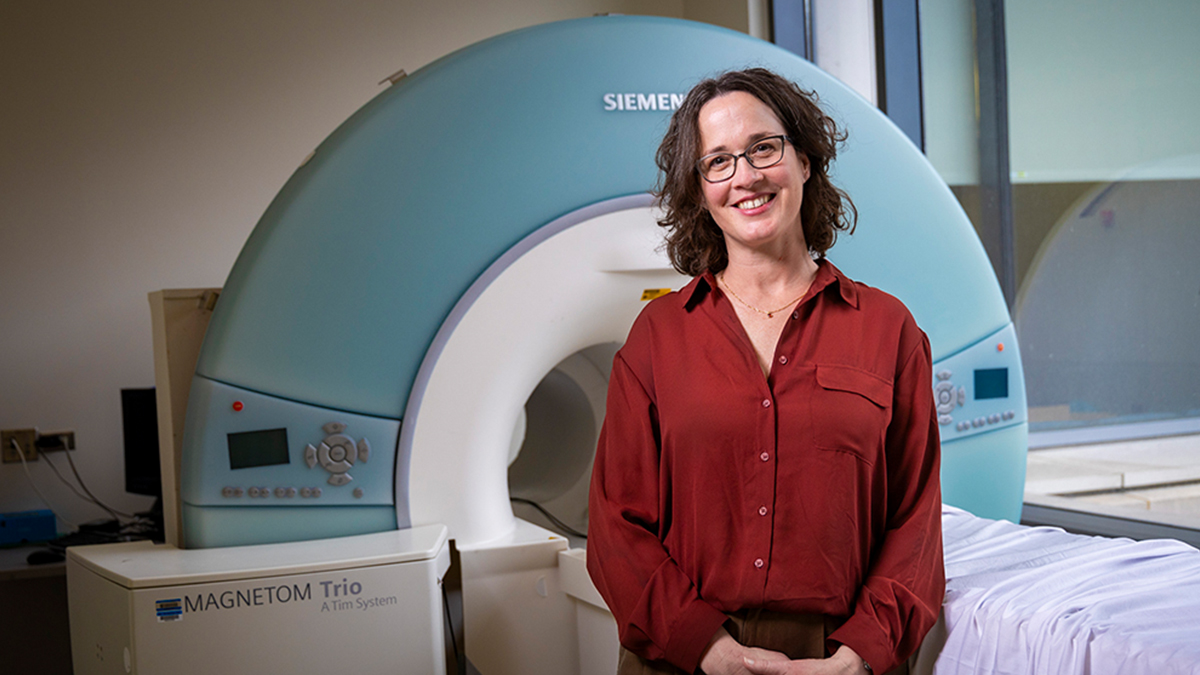Climate game-changers
For thousands of years, the northern Andes Mountains have acted as a carbon sink, preserving organic matter as thick soil. As the planet warms, what will happen to all that carbon? This past summer, Carolina undergraduates traveled to Ecuador to take a closer look.
Moss-covered molehills pepper the landscape, each a different shade of autumn. Some are mustard yellow, others evergreen. Upon closer inspection, petite redbuds peep through the growth while spindly, fingerlike plants called lycophytes grow long and tall on the mounds’ surface. It’s as if a coral reef was scooped up from the ocean, lifted 14,000 feet into the sky, and plopped on top of a mountain.
Carolina students leap from one mossy hump to another, occasionally overshooting their mark and slipping into the muddy waters in between. As they stop to catch their breath, quickly exhausted from the high altitude, they drop a sensor into one of the small pools to measure carbon. Between measurements, they look up to admire the dusty white peaks of Antisana, the fourth-highest volcano in Ecuador. Just behind it sits Cotopaxi, once thought to be the highest summit in the world and now one of South America’s most active volcanoes, having erupted more than 50 times since 1738.
Home to 27 volcanoes, Ecuador has accumulated organic matter for thousands of years, as volcanic soils accrue more carbon than any other ecosystem. Called a páramo, this type of landscape is found in the northern Andes Mountains. It’s a tropical environment, but because of the high elevation, the temperature remains low and the decomposition of organic matter slows. Scientists call locations like this carbon sinks — places of long-term carbon storage.
“The carbon content per unit area of soil in this area of the Andes Mountains is among the highest on the planet,” UNC-Chapel Hill geographer Diego Riveros-Iregui said.
In the last three centuries, both natural and human-made carbon dioxide emissions have contributed more to climate change than any other greenhouse gas. It traps heat in the atmosphere, and while there are other gases with more potent heat-snaring ability per molecule than CO2, they are simply far less abundant. When CO2 is emitted, 40% resides in the atmosphere for 100 years and 20% hangs around for 1,000. The final 10% takes 10,000 years to turn over.
As the planet continues to warm, carbon decomposition rates within the North Andean páramo will increase and release all that organic matter, further heating the planet.
Riveros-Iregui is using his 2019 National Science Foundation Early Career Award, a five-year grant that combines research and education, to better understand these processes. He spent six weeks in Chapel Hill training five undergraduates and a doctoral student on carbon measurement methods within water systems. This past summer, the team spent two months in Ecuador measuring the carbon in a watershed at Cayambe Coca Ecological Reserve. This is the first of three cohorts he will take to South America.
Inland waters like those found in the North Andean páramo are very important in the carbon cycle because they emit greenhouse gases like carbon dioxide and methane at different times of the year depending on how much water is flowing downhill.
“These ecosystems are emitting a lot more carbon than previously thought,” Riveros-Iregui explained. “Given the elevation and mean annual temperature of these tropical environments, these would be sources of atmospheric carbon that are currently unaccounted for.”
These tropical watersheds have never undergone consistent monitoring for this long, and the students involved have never conducted fieldwork — a challenge that entices Riveros-Iregui.
Data deluge
Knit hats. Face masks. Waterproof gloves. Winter jackets. Rainboots on top of three layers of socks. This is the reality of conducting research at the reserve, located just west of the continental divide. Some days it’s 50 degrees and sunny; others, it’s 25 and sleeting.
When humidity generated hundreds of miles away in the Amazon crashes into the Andes Mountains, it undergoes orographic lifting, which is when air is forced from lower to higher elevation, causing it to cool quickly and form precipitation.
One day, a white mist settles over the mountain. It’s 36 degrees. The wind moves at about 10 mph. Visibility is 30 feet. Just 15 minutes away, toward town, the sky is blue and the sun is shining. But here, it’s like being trapped in a snow globe.
Senior Chloe Schneider pulled on a black facemask and gloves, then head down a steep, wooded hill, grabbing handfuls of long grasses and shrubs to stay upright. She carried a homemade carbon dioxide monitoring station — two pieces of wood attached to a gray plastic box containing a battery-powered data logger. Face swathed in a rainbow-colored scarf and hat, senior Megan Raisle followed, wielding a piece of rebar that will secure the device to the ground.
After making their way to the slope’s bottom, they walked about a hundred feet to the left, where a small waterfall weaves through the site. They secured the monitoring station, running a wire from the box to a sensor placed inside a PVC pipe embedded in the streambed.
Later that day, Schneider and Raisle repeated this trek, a different instrument in tow. On top of measuring the CO2 present in the water, they also needed to record what’s being emitted into the air. To do this, they created floating sensors using large flowerpot saucers with plumbing components wedged into the centers to hold the air collection chamber firmly in place.
Building the sensor housings and platforms feels like an exercise in critical thinking,” said geography doctoral student Andrew Murray, who designed the first iteration of these devices.
Additional sensors — 18 in all — measure water flow, dissolved oxygen, solutes like chlorophyll, other forms of carbon and salt. During the entire two-month expedition, they remained in place, collectively recording nearly 2,000 environmental observations a day and, overall, painting a broad picture of what happens to the carbon stored in these ecosystems every time it rains.
Senior Maribel Herrera is well-versed in geography and environmental science, her two majors, but she’s just beginning to learn the analysis aspect. “I’m comfortable with doing the hands-on work and deploying the sensors and stuff,” she said. “But then when I get the data, it’s all these numbers. How do I synthesize this, and what do these numbers mean?”
Cue Murray. Not only did he create the blueprints for the sensor stations and oversee the project’s execution in Ecuador, but he also specializes in R — a complicated computer-programming language for data management analysis — and guided the students in that work.
“Collecting good data is just one part of this,” Murray said. “Knowing what to do with it and being able to work on it collaboratively with other people is another.”




